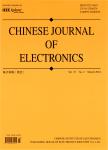Dilated Convolutional Pixels Affinity Network for Weakly Supervised Semantic Segmentation
Dilated Convolutional Pixels Affinity Network for Weakly Supervised Semantic Segmentation作者机构:College of Computer Science and Technology Jilin University Key Laboratory for Symbol Computation and Knowledge Engineering of National Education Ministry
出 版 物:《Chinese Journal of Electronics》 (电子学报(英文))
年 卷 期:2021年第30卷第6期
页 面:1120-1130页
核心收录:
学科分类:08[工学] 080203[工学-机械设计及理论] 0802[工学-机械工程] 0812[工学-计算机科学与技术(可授工学、理学学位)]
基 金:supported by the Development Project of Jilin Province of China (No.20200801033GH, No.2020122328JC) Key Laboratory of Symbolic Computation and Knowledge Engineering of Ministry of Education Jilin University (No.20180520017JH) the Fundamental Research Funds for the Central Universities,JLU
主 题:Weakly supervised Semantic segmentation Convolutional neural networks Dilated convolution Self-attention mechanism
摘 要:This paper studies semantic segmentation primarily under image-level weak-supervision. Most stateof-the-art technologies have recently used deep classification networks to create small and sparse discriminatory seed regions of each interest target as pseudo-labels for training segmentation networks, which achieve inferior performance compared with the fully supervised setting.We propose a Dilated convolutional pixels affinity network(DCPAN) to localize and expand the seed regions of objects to bridge this gap. Although introduced dilated convolutional units enable capture of additional location information of objects, it falsely highlighted true negative regions as dilated rate enlarge. To address this problem,we properly integrate dilated convolutional units with different dilated rates and self-attention mechanisms to obtain pixel affinity measure matrix for promoting classification network to generate high-quality object seed regions as pseudo-labels; thus, the performance of the segmentation network is boosted. Furthermore,although our approach seems simple, our method obtains a competitive performance, and experiments show that the performance of DCPAN outperforms other state-ofart approaches in weakly-supervised settings, which only use image-level labels on the Pascal VOC 2012 dataset.



